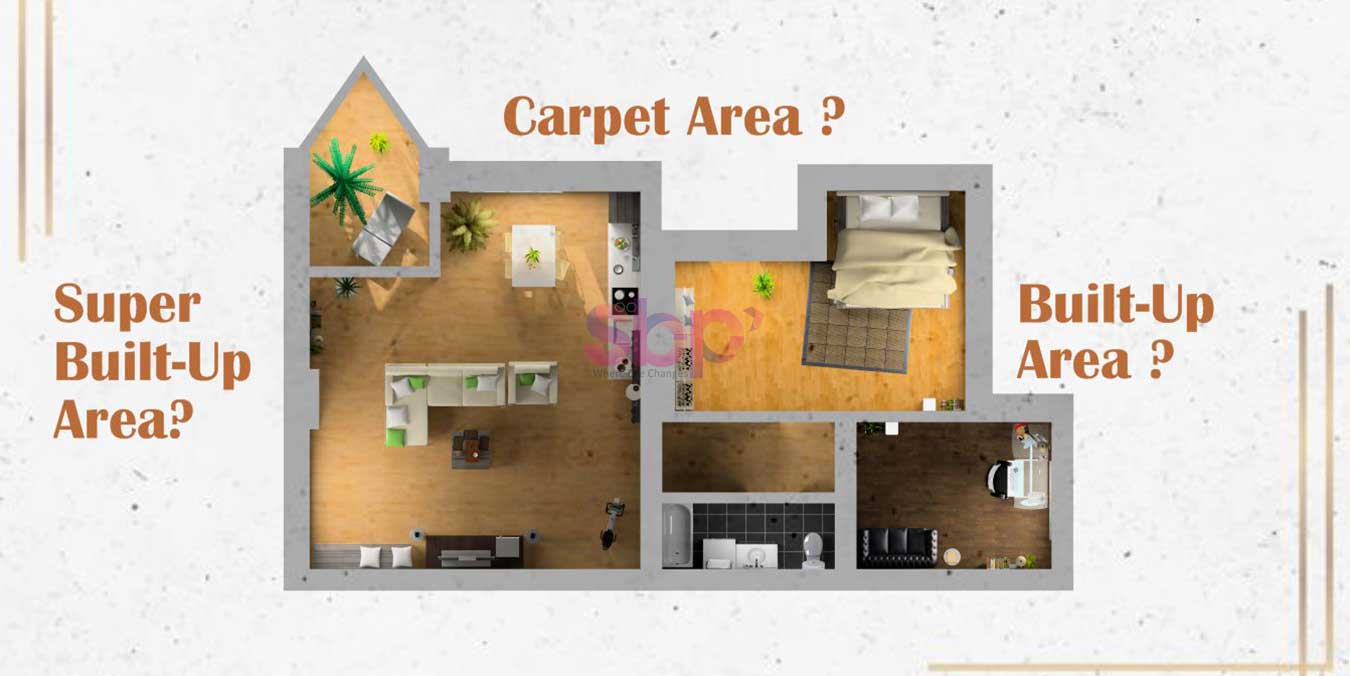When a person buys a home, they expose themselves to various new words, jargon, and terminologies that they may or may not know. As not many people deal with real estate regularly or buy or sell property on daily basis like brokers and real estate agents, people can find it difficult to understand what is being told to them. As a prospective homebuyer, it is important to understand the jargon used by real estate agents to prevent costly errors that may hinder your chances of having the right property of your preference. Most of the time, the words and phrases are thrown at us by brokers and realtors leave us looking cluelessly at them. Real Estate Terms like carpet area, built-up area, and the super built-up area mostly evade our realm of comprehension when buying a home, or at least create some confusion.
It is a sad fact, but by charging higher prices, some unscrupulous businesses have exploited this lack of awareness of consumers to their advantage. So, before you talk to your agent next time, it is important that you know about these real estate terms.
These three ways of measuring the area, or the square footage, in any residential building. They may not always sound so different, but there is actually a major differentiation between the carpet area and the built-up area.
But don’t worry, SBP Group helps you by clarifying the distinctions between the three jargon widely used: carpet area, built-up area, and super built-up area:
Carpet Area:
As the name suggests, it is the area that would potentially be covered by a carpet or, excluding the thickness of the inner walls, the area of the apartment. The carpet area does not include the space occupied by communal areas, such as the lobby, elevator, stairs, playground, etc. The actual area you get for use in a residential unit is the carpet area. So look at the carpet area and then make your decision when you are in search of a home because that is the amount that will give you an idea of the actual room in your hands. knowledge about your carpet area will assist you in knowing space available In the kitchen, bedroom, living room, etc.
Nowadays, many builders do not even disclose carpet area and generally charge on the basis of built-up or super built-up area. Remember that under the RERA (Real Estate Regulation and Development) Act guidelines, it is mandatory for developers to report the carpet area of each apartment because the sale price to be determined on its basis.
The Carpet Area is Normally Approximately 70% of the Built-up Area.
Built-up Area:
The built-up area is the area that comes after the carpet area and wall area has been added. Take into account that, the area of the wall does not mean the area of the surface, but the thickness of the unit’s inner walls. The area that constitutes the walls is about 20% of the built-up area and shifts the viewpoint entirely. Other areas required by the authorities, such as a dry balcony, flower beds, etc., also constitute the built-up area, adding up to 10% of the built-up area. So the usable area, when you think about it, is just 70% of the built-up area.
It should be noted that the percentage may differ according to the project or the developer.
Built-Up Area = Carpet area + Area of Walls + Area of the Balcony
Super Built-up Area:
The super built-up area is the combined amount of the built-up area and the area covered by common areas such as lobby, stairway, elevator, shafts, clubhouse, etc. Builders also charge consumers based on this area to meet their construction costs. It is therefore referred to as the ‘saleable’ area. The loading factor, which is the proportion of the common area in the apartment calculated by adding a multiplier (1.25) to the carpet area, is closely related to the super built-up area. This leads to a rise of 25% or 30 % of the total area to be sold. Its value is determined as the difference between the super built-up area and the carpet area. Many developers price the apartment on the basis of the loading factor.
Super Built-Up Area = Carpet Area (1+ Loading Factor)
As described above, most real estate developers used to sell apartments on the basis of a super built-up area, which often consists of a common area. This situation is before the RERA act was commenced. Considering that builders and developers used to price their apartments on the basis of a super-built or ‘saleable’ area, being ignorant of the fundamental distinction between the carpet area and the built-up area because of this many people faced exploitation in past years.
Now let’s take an example for your revision of these real estate terms.
- If you have a built-up area of 1,000 sq ft, then the carpet area will be 70 % off 1,000 sq ft, which is equal to 700 sq ft.
- If you have a super built-up area suppose is 1200 sq ft, then the built-up area will be 70% carpet area + 10% (areas of wall and balcony). Your built-up area will be 80% of 1200 sqft which is 960 sq ft.
- Let’s say a developer applied a loading of 25 percent for an apartment with carpet area of 800 sq ft. Using the formula mentioned above (800*1.25), the super built-up area will be 1,000 sq ft.
Terminologies and jargon of real estate can be confusing if you don’t pay enough attention to it. That is why homebuyers should make sure that they know the basics of it before talking with any broker or agent and if you don’t know about any term don’t be afraid to ask about it.
For any help regarding real estate, you can always connect with us at our website www.sbpgroup.in or our social media platforms.







